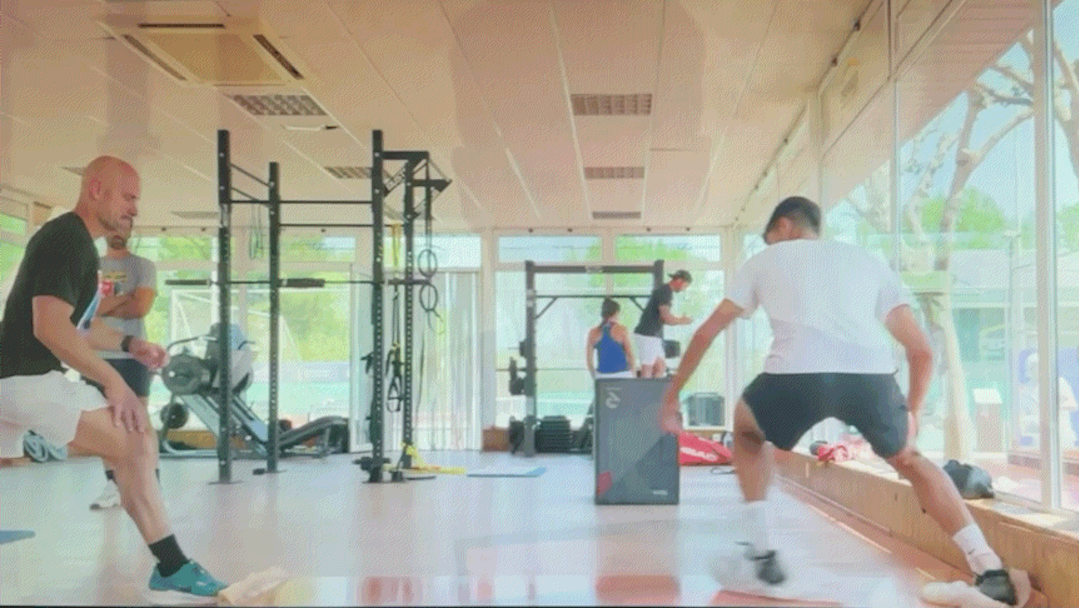A quick first step is essential to competitive success in tennis. Some baseline capability for speed is an inherent characteristic of a person. It is similar to being tall. While these core attributes cannot be modified through training, a player can develop additional skills that mitigate and enhance their natural abilities. For example, a short player can work to increase vertical leap capacity and consequently “play taller” than their natural height.
Complete Conditioning for Tennis (sponsored link) defines quickness in tennis as “read, react, and explode.” The Read phase is an alternative term for anticipation and recognition of what is likely to happen as the person on the other side of the net prepares to strike the ball. Reaction is essentially the ability to quickly synthesize an appropriate response. Explode is the phase where the response is translated into physical action.
Tennis points are a series of bursts of relatively short sprints. That means that tennis players need to train for both acceleration and deceleration. Tennis involves a lot of starting, stopping, and changing direction. A player’s ability to explode is a direct function of a player’s “Go” muscles. This is an area where baseline capability can be improved through training. Tennis specific movement and agility drills can produce gains that enhance a player’s on-court movement.
As I continue to rehab from my recent foot injury, it is increasingly apparent that I have lost significant power in my first step movement. Quite frankly, I wouldn’t have thought I had that much capacity to lose. Since I am still basically on a “pitch count” that limits my high impact steps, I have been exploring methods to train for explosive strength at low impact.
That means that I have been doing a lot of squats. I have found that the “High Powered Legs” workout in the Nike Training Club App (free and not a sponsored link) contains a great assortment of workouts that map well into tennis specific functional movement. For now, I a having to modify a couple of exercises in that program to lower the intensity of high impact landings. I continue to build up toward the full speed/intensity on the complete workout.
I am anticipating that even when this current injury is fully behind me, that I will continue to work my “Go” muscles to enhance my naturally low levels of explosive speed and power. Along those same lines, I have also started experimenting with hip thrusters. I am… not even remotely close to the amount of weight that Emma Raducanu apparently lifts on that exercise.
Fiend At Court participates in the Amazon associates program and receives a paid commission on any purchases made via the links in this article. Additional details on the disposition of proceeds from this source are available in the “About Fiend at Court” page.



